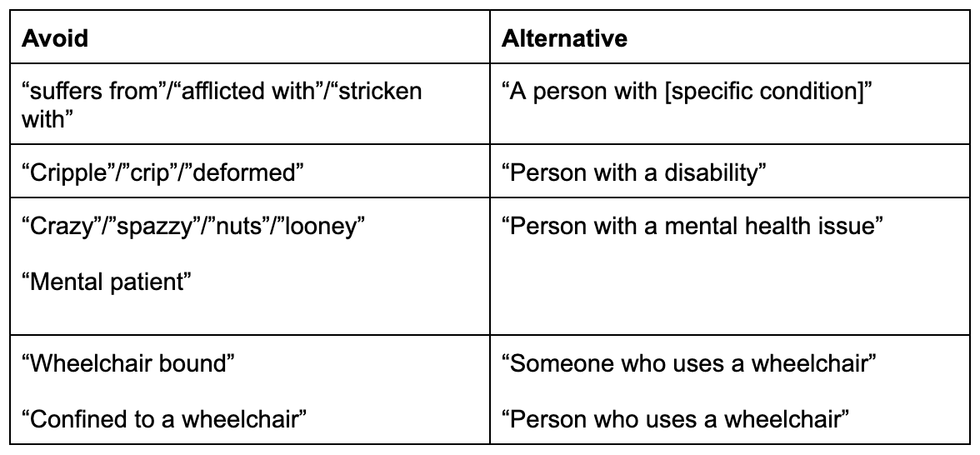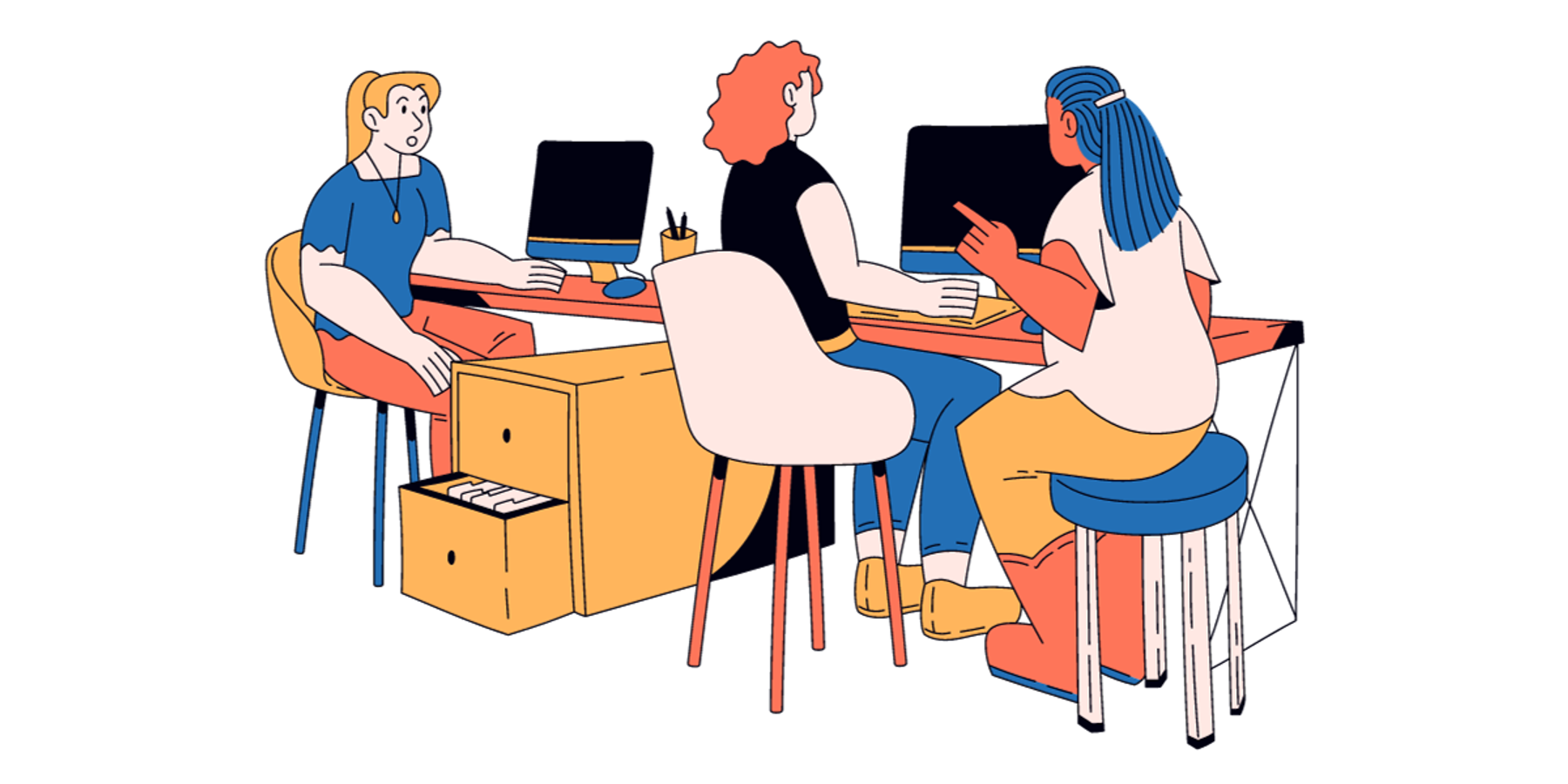Ableism isn’t just an attitude or a set of discriminatory actions. It is the result of a social structure that labels certain people as “normal” and values their lives above others. Because concepts of “normal” are so foundational in society, ableism is subtle and omnipresent. Whether it’s in microaggressions like jokes, common expressions like “that’s crazy,” or the misplaced positivity of inspiration porn, we all perpetuate ableism. Even this article, for example, assumes that the reader can see and can read. Even when our actions are well-intentioned, ableism may still be present. This article will cover what you need to know about ableism and how to combat it in the workplace.
What is ableism?
Before considering how to combat ableism, we have to understand what it entails.
An ableism definition
Ableism is the concept and practice of placing superior value on certain types of bodies, brains, forms of communication, and certain ways of being over others. The systems and places in which we live have been created for non-disabled bodies and neurotypical minds. The world doesn’t make room for people that don’t fit those labels. These could be individuals with physical, developmental, learning, psychiatric, and sensory disabilities.
Disability impacts us all
The reality is that disability impacts us all. Over one in four adults (26%) in the United States have some type of disability. But communities and environments that are accessible and inclusive benefit us all. Wheelchair ramps also help people carrying boxes or mothers pushing strollers, for instance. And universal, accessible toilets spare trans people from having to choose a gendered bathroom. But combatting ableism doesn’t end with infrastructure.
Intersectionality and people with disabilities
Intersectionality is the concept that a person can be subjected to multiple forms of oppression simultaneously.
Acknowledging diverse abilities requires acknowledging the importance of intersectionalities as well. When we take a limited view of a person and consider them as being mainly characterized by their disability, or when we fail to recognize their disability, we’re not accounting for the whole individual. Any solutions we create without considering a person’s full experience are bound to fall short.
Ableism in the workplace
Ableism at work means the workplace environment is not set up for people with diverse abilities. Those with diverse abilities are tacitly required to conform to a certain way of doing things. This could be the ways in which we communicate, interact, problem-solve, move, and carry out day-to-day work. Companies need to examine their practices and address questions like:
- How can we find out about a person’s diverse abilities?
- What does this person need to feel welcome here?
- What do they need to thrive and succeed?
- Who does not feel welcome in this space? Why?
Rather than forcing people with diverse abilities to fit the workplace, how can we adapt the workplace environment to fit people with diverse abilities? Communication and relationship-building form the foundation to addressing ableism in the workplace.
Ableism examples
Let’s take a look at some concrete examples of ableism and how it shows up in work and life.
Disability discrimination
Perhaps the most obvious example of ableism is in the accessibility of buildings and infrastructure. These are things often associated with the Americans with Disabilities Act (ADA), like doors that are too narrow, buildings that don’t have elevators, countertops that are too high, and much more.
Less obvious disability discrimination against people with diverse abilities are expectations about how we communicate (e.g. eye contact, handshakes) and how we move (or don’t) with and without mobility aids.
Ableist language
There are so many ableist words that are embedded within language that we may not realize the impact of what we’re saying. Here are some ableist words and preferred alternatives.
For a more comprehensive look at inclusive language, check out this guide.
Working from home
Prior to the COVID-19 pandemic, people with disabilities had been asking for remote work options for years. They were often told that remote work was not feasible or realistic and didn’t count as reasonable accommodations under ADA law.
Pew Research during the pandemic revealed that 71% of employees were working at home most or all of the time. A further 87% indicated that it was very or somewhat easy to have the technology to do it. Many people with disabilities now ask their employers: Hasn’t it always been that easy?
This contrast is a glaring example of ableism as an expectation that people with diverse abilities need to adapt to the workplace rather than the other way around.
6 ways to avoid ableism at work
There are plenty of practical ways we can reduce ableism in the workplace. Here are six issues you can address right away.
1. Remove ableist language from job descriptions.
“Must be able to carry 15 lbs” or “must be able to drive a car” – really? These kinds of statements are blatantly ableist. They are also almost always unnecessary, and yet they are quite common phrases in job descriptions. Review all your job descriptions and remove ableist language.
2. Approach job interviews inclusively.
Ask candidates how they would like to be interviewed. A person with diverse abilities may not want a video interview or may want screens off, for example. Give candidates interview questions in advance to help reduce anxiety.
3. Understand individuals' needs.
Onboarding is a great opportunity to find out if a new hire has a disability. Take the pressure and anxiety of bringing up a disability off the person. Don’t ask directly, “Do you have a disability?” Instead ask “What resources do you need to succeed?” and “How can we help you feel welcome?” It’s best not to demand proof for disabilities that are unseen. Making a more inclusive workplace should be a process of communication and relationship building, not a battle of demands or a negotiation of what a company can avoid doing.
4. Identify and reduce bias.
An estimated 96% of disabilities in the U.S. are unseen. We cannot make assumptions about who has a disability and who does not. Host diversity training that’s specific to disabilities and ableism in order to identify and reduce your bias.
5. Pass the mic.
A slogan of the disability rights movement – “nothing about us, without us” – is a call for representation in decision making. Consider who has a seat at the table when it comes to creating the policies and processes for people with disabilities. Create a diverse abilities ERG and give members a say in deciding accommodations in your workplace.
6. Hire people with diverse abilities.
Only four percent of the companies that say they value diversity consider disabilities as a factor. Take a demographic survey of your current employees, and find out what kind of diverse abilities are underrepresented. Set clear goals to hire people with diverse abilities such as neurodiverse candidates.
Download the free guide:
Recruiting, Retaining, and Elevating Neurodiverse Talent
Unlearning ableism
We are all products of an ableist society. Our workplaces are no different. Unlearning ableist behaviors and thoughts is an ongoing process. In structured environments such as work, ableism can be acute. There are concrete ways we can reduce ableism in the workplace. These methods all revolve around understanding the diverse abilities and identities of our employees, communicating with them about it, and making the necessary adaptations to the workplace so they can be successful.





